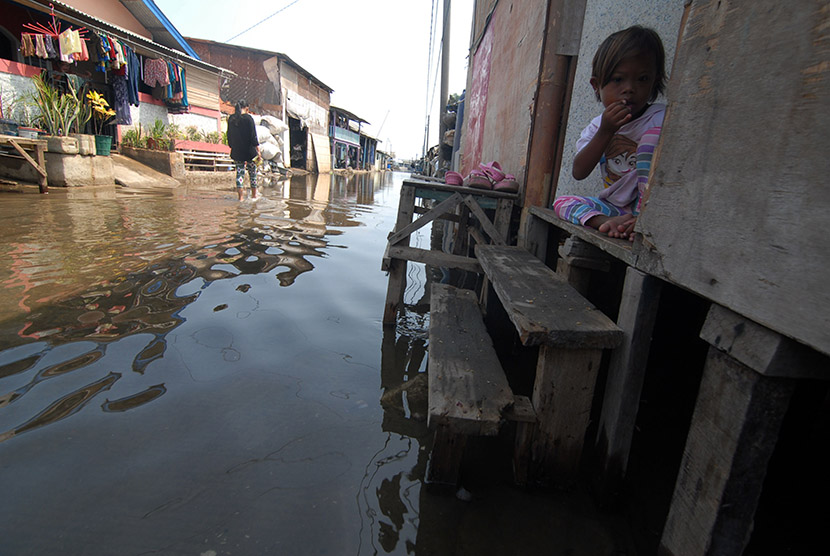REPUBLIKA.CO.ID, BLITAR -- Hundreds of homes were flooded up to 50 cm deep in Sutojayan Sub-district, Blitar District, East Java Province, following a dyke burst, Elli Ermawati, a local inhabitant, said on Wednesday.
"The floodwaters' height is up to 0.5 meter. Our activities are paralyzed. Nothing (we) can do, because everything is inundated," she said.
She hoped that the local authorities could repair the damaged dyke immediately.
The flooding affected Kedung Bunder, Sutojayan, and Bacem villages in the sub-district of Sutojayan.
Sutojayan Village Head said some 200 families were affected by the flood in his area. Besides, several hectares of rice fields were submerged by the floodwaters.
The dyke's damage covered a width of 25 meters.
In the Sutojayan sub-district, the floods submerged tens of hectares of farming areas and swept away five hectares of them.
Schools were temporarily closed due to the flooding.'
In Pekalongan District, Central Java, floods triggered by incessant heavy rains since Sunday (Jan 31) evening had submerged hundreds of homes in three villages.
The affected villages were Bener located in Wiradesa Sub-district, and Tegaldowo as well as Jeruksari villages in Tirto Sub-district, head of the Pekalongan disaster mitigation office (BPBD) Bambang Sujatmiko stated in Pekalongan, on Monday (Feb. 1).
The floodwaters, reaching a height of up to 40 centimeters, also inundated several schools and prevented the local inhabitants from conducting their routine daily activities, 30-year-old local resident Muhammad stated.
In the meantime, the Meteorology, Climatology and Geophysics Agency (BMKG) forecast that nearly 90 percent of Indonesia will experience heavy rains and strong winds that could continue until the second week of February.
As the country is still grappling with the impacts of El Nino, the BMKG recently announced that another natural phenomenon called La Nina, which is the opposite of El Nino and usually triggers a heavy rainy season in Indonesia, is forecast to begin in September 2016.


